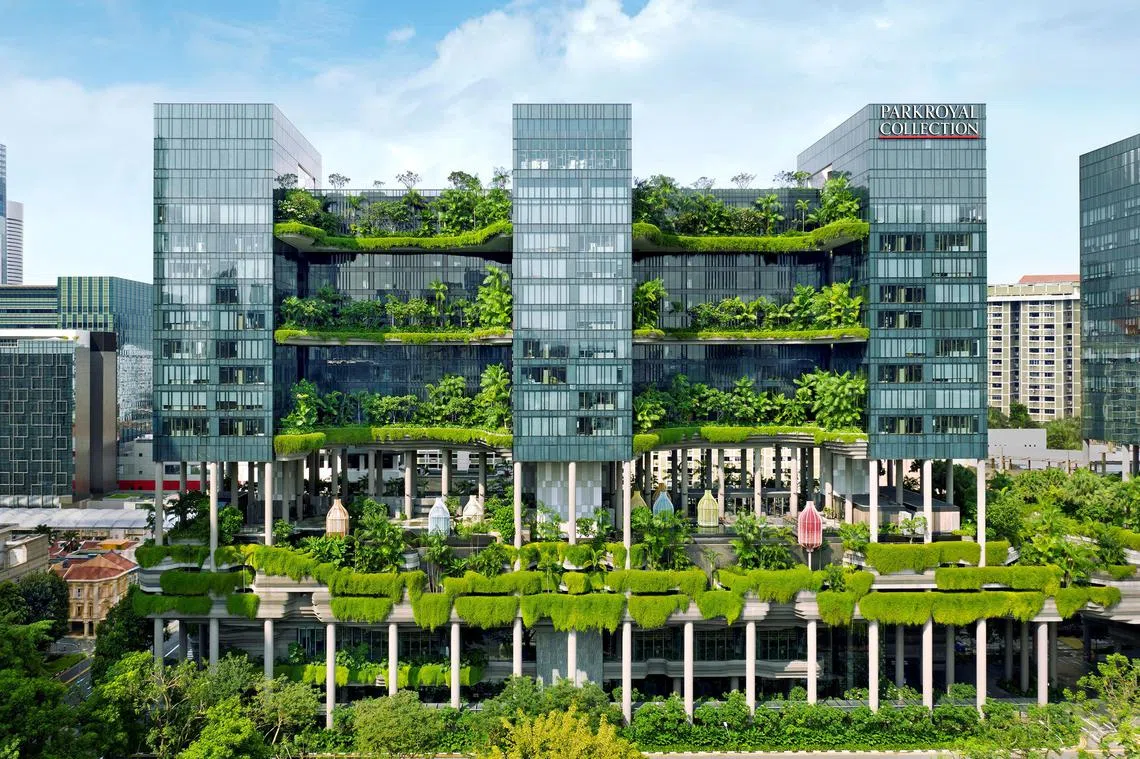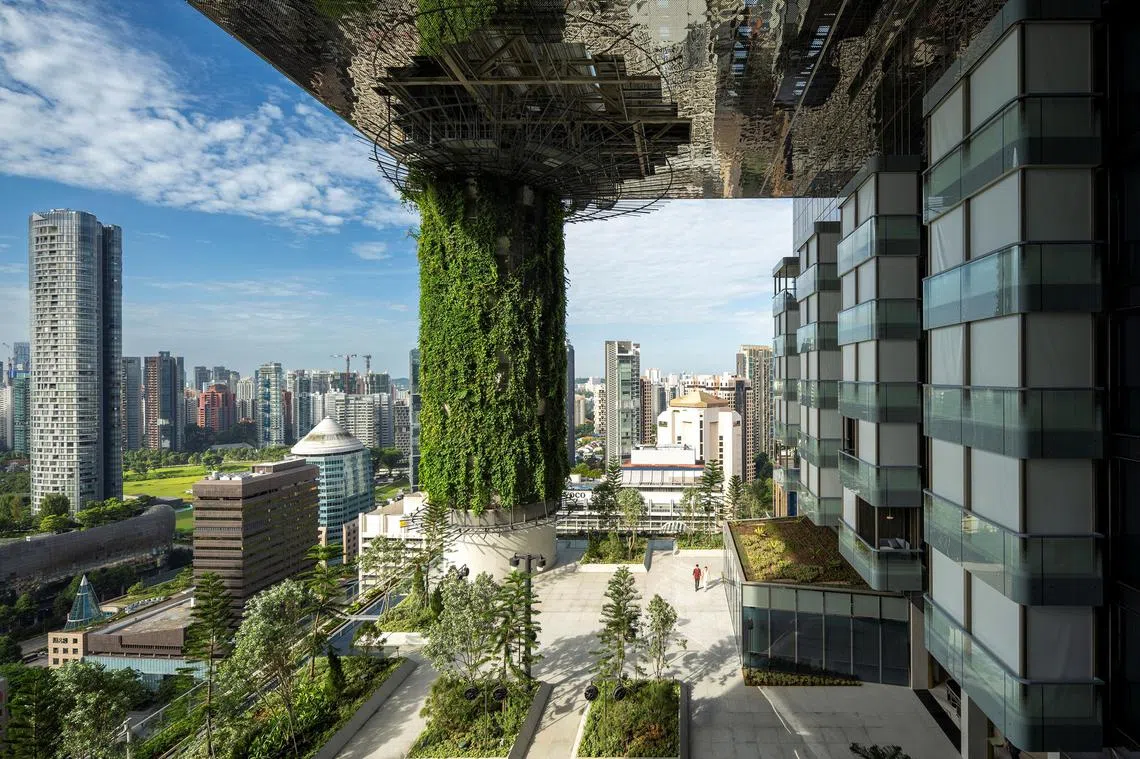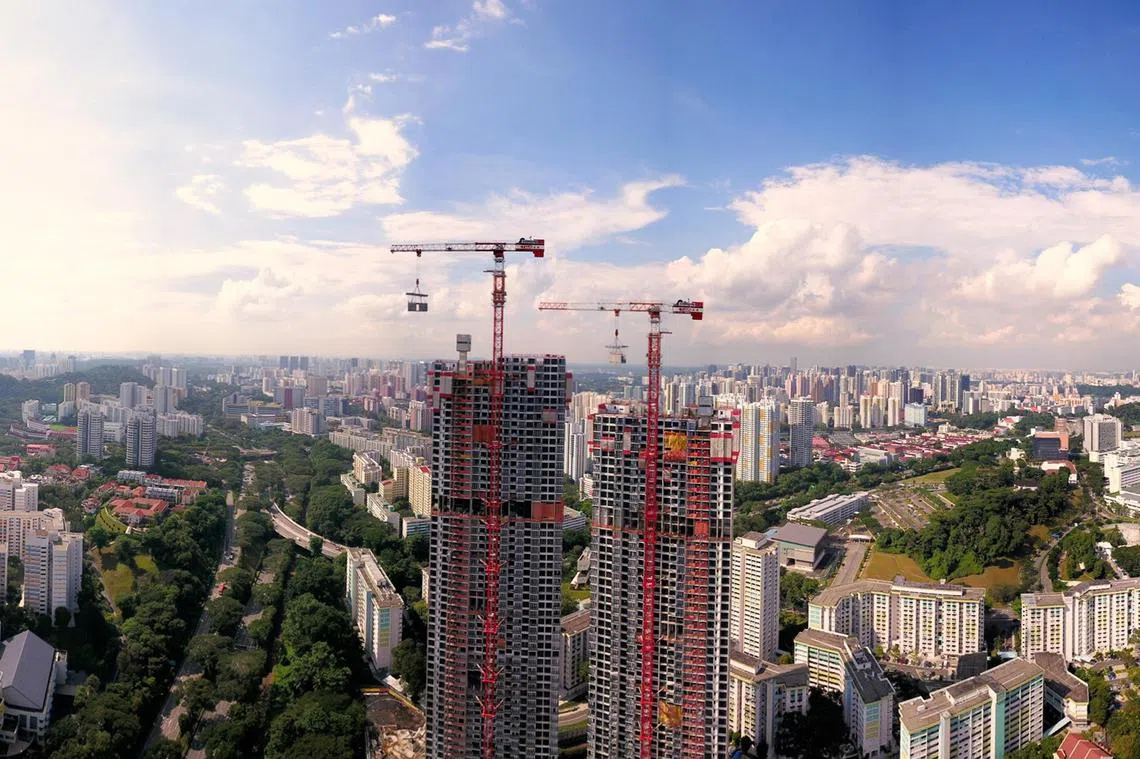Going green is more than a trend
Embedding sustainability in the business allows companies to reap distinct benefits, despite its challenges and trade-offs, says UOL chief legal and sustainability officer Yeong Sien Seu

STEP into a Parkroyal Collection hotel and you are greeted by greenery. The brand was created in January 2020 specifically to champion sustainability, and all its hotels boast green spaces and eco-friendly practices.
What some forget, though, is that the brand’s owner Pan Pacific Hotel Group, and its parent company UOL Group , have long been champions of the plant-heavy design plan.
Take, for instance, Parkroyal Collection Pickering, which first opened in 2013 as Parkroyal on Pickering. Built at a cost of S$350 million, its facade was covered in creepers and the amount of greenery in the hotel was said to be the same as that of Hong Lim Park across the road.
This foliage served more than aesthetic purposes. It helped keep the building cool, cutting energy use. UOL and Pan Pacific also installed solar cells and rainwater collection systems, which further reduced its carbon footprint.
The building has since been refreshed, and its emphasis on sustainability refined. Yeong Sien Seu, UOL’s chief legal and sustainability officer, said it has also become a prototype for the group’s hotels.
At Pan Pacific Orchard, which opened in June last year, the amount of landscaped foliage in its four levels of sky garden covers 12,000 square metres – more than 300 per cent of the hotel’s land area.
There are photovoltaic panels to generate clean energy, a rainwater harvesting system for landscape irrigation, and a biodigester system for food waste.


This green focus has helped UOL clinch the Impact Enterprise Excellence Award in the large enterprise category at the 2024 Sustainability Impact Awards organised by The Business Times and UOB.
UOL has reaped a range of rewards from its sustainability practices.
Yeong said eco-friendly practices and features have grown in importance as a means of attracting guests, as travellers become increasingly environmentally conscious.
Energy-efficient systems and waste-reduction initiatives have also improved overall efficiency and the group’s bottom line, he said.
“As the impact of climate change becomes more pronounced, sustainable practices help hotels adapt to and mitigate environmental challenges. This proactive approach ensures long-term viability and resilience in a changing world.”
Driving sustainability
Yeong said sustainability has been central to UOL’s businesses in both property development and hospitality, since the group embarked on its sustainability journey in 2011.
“(We) are driven by a deep commitment to environmental stewardship and a vision for long-term resilience,” he said.
UOL integrates sustainability at every level and operation, from its building design and construction methods, to the management of properties, as well as in its governance, corporate social responsibility programme and staff engagement.
The group’s sustainable practices are not just about reducing environmental impact, Yeong said, but also about enhancing the quality of its customer experience and engaging stakeholders – from employees to business partners.
He believes UOL’s sustainability efforts have added immense value to its brand. “As a developer and hospitality group, we are known for pioneering the adoption of advanced construction technology,” he said.
He cited the group’s use of prefabricated prefinished volumetric construction (PPVC) in its developments. This is a method of construction in which large modules complete with finishes are manufactured in factories and assembled onsite. It requires less manpower, improves productivity and site safety, and minimises dust and noise pollution.
UOL’s first PPVC project was The Clement Canopy condominium in Clementi, which was launched in 2017. At the time, it was the world’s tallest residential development built with PPVC technology – standing at 140 metres. This record was later surpassed by another of the group’s projects, Avenue South Residence in Bukit Merah, at 192 metres.

There are, of course, some trade-offs and challenges when prioritising sustainability, Yeong said.
One is balancing the initial cost of sustainable materials and technologies with long-term benefits. “Implementing eco-friendly solutions often requires significant upfront investment, whether it is in energy-efficient systems, green building materials, or sustainable sourcing practices.”
There are also operational challenges, such as ensuring employees are fully trained and aligned with sustainability goals; as well as design trade-offs, since sustainable choices can sometimes limit the range of materials or construction methods available.
“However, we view these challenges as opportunities to innovate and lead by example,” Yeong said. “The long-term gains in energy savings, enhanced customer experiences, and the positive impact on our brand and the environment far outweigh the initial hurdles.
“It is a journey of continuous learning and improvement, where the benefits of sustainability ultimately contribute to the group’s resilience and success.”
Decoding Asia newsletter: your guide to navigating Asia in a new global order. Sign up here to get Decoding Asia newsletter. Delivered to your inbox. Free.
Copyright SPH Media. All rights reserved.





